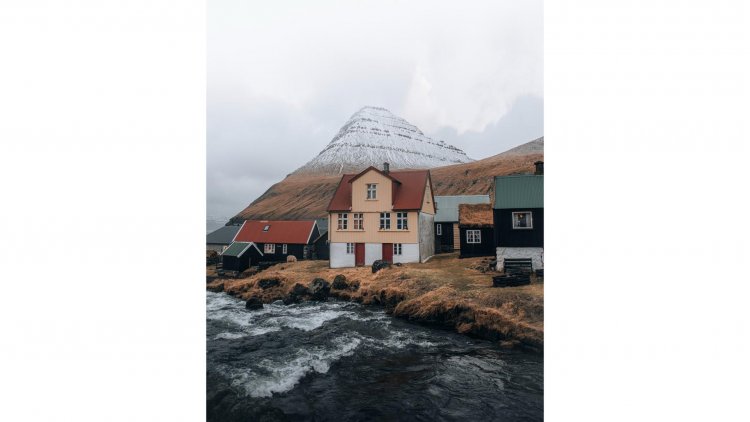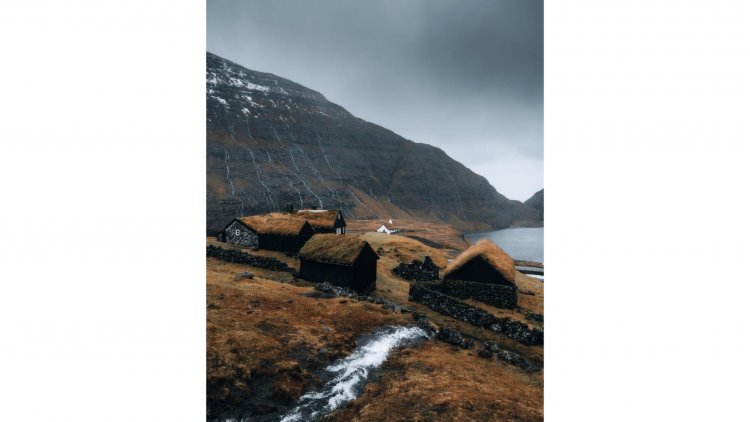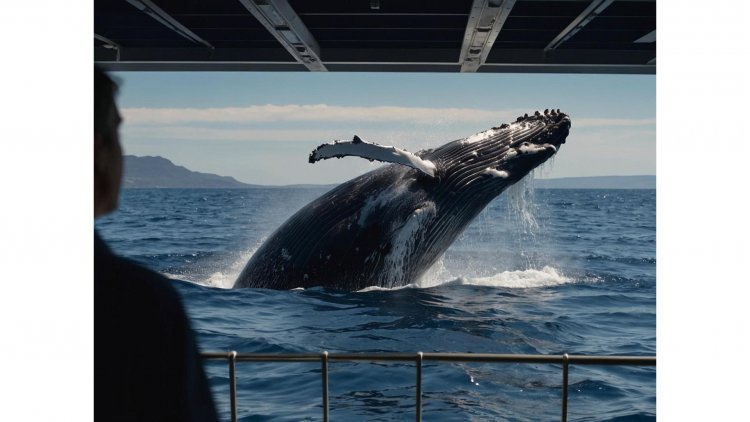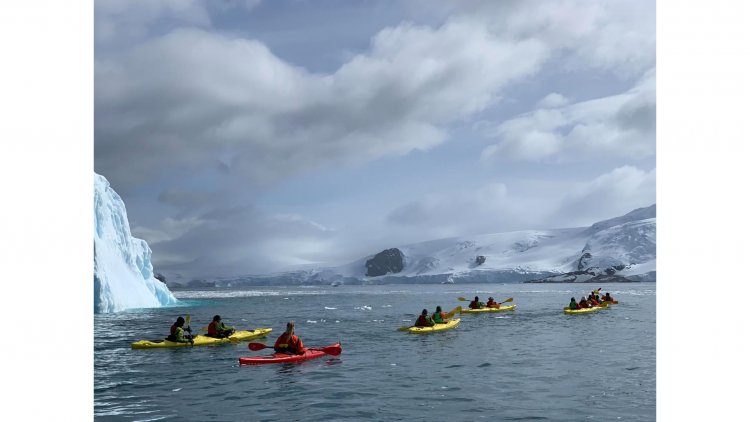Mystical Haven: Discovering the Untamed Wonders of the Faroe Islands
The Faroe Islands, an archipelago of 18 volcanic islands nestled between Iceland and Norway, offer an unparalleled blend of rugged landscapes, dramatic cliffs, and serene beauty. While their remote location might deter some travelers, it is precisely this isolation that has preserved the islands’ pristine natural environment, making them a haven for adventurers and nature lovers alike. The Faroe Islands are often overshadowed by more popular destinations, but those who venture here are rewarded with an untouched beauty that feels almost otherworldly. In this extensive exploration, we will delve into the islands' breathtaking landscapes, unique wildlife, and cultural heritage.


Majestic Landscapes: A Symphony of Nature’s Artistry
One of the most compelling reasons to visit the Faroe Islands is the sheer grandeur of its landscapes. The islands are renowned for their dramatic fjords, towering cliffs, and lush valleys. Each island presents a distinct geological character, shaped by volcanic activity and glacial erosion. The landscape is often described as a mixture of rugged mountains, verdant green hills, and deep blue seas, which together create a mesmerizing visual experience.
The Rugged Terrain of Vágar
Vágar, the third-largest island in the archipelago, is often the first port of call for many visitors. The island is famous for its iconic lake, Sørvágsvatn, which appears to be suspended high above the ocean due to an optical illusion. In reality, the lake is only about 70 meters above sea level, but the way it is framed by the surrounding cliffs creates the illusion of it being hundreds of meters above the sea. This stunning phenomenon is a must-see for any photographer or nature enthusiast.
Vágar also boasts the dramatic cliffs of Múli, which offer spectacular views of the surrounding landscape. Hikers can explore the island’s many trails, each leading to panoramic vistas of the fjords and mountains that characterize the Faroe Islands. The trails are well-maintained, making it accessible for both casual walkers and serious hikers.
The Dramatic Cliffs of Kalsoy
Kalsoy, known as the "Klaksvík’s Sister," is another island renowned for its striking natural features. It is home to the legendary Kallur Lighthouse, perched on the edge of a cliff that drops dramatically into the North Atlantic. The hike to the lighthouse is challenging but rewards trekkers with some of the most breathtaking views in the Faroe Islands. The sheer cliffs and rugged terrain of Kalsoy offer a true sense of the raw power of nature.
The island is also known for its distinctive shape, which resembles a long, narrow finger pointing out into the sea. The dramatic landscape of Kalsoy, combined with its isolation, creates a sense of serenity and awe that is hard to find elsewhere.
The Green Valleys of Streymoy
Streymoy, the largest and most populous island, features some of the Faroe Islands’ most picturesque valleys. The island’s capital, Tórshavn, is situated in one of these valleys and serves as the cultural and economic hub of the archipelago. The surrounding areas offer numerous opportunities for exploration, including the scenic Saksun Valley and the tranquil Lake Sørvágsvatn.
Saksun Valley is particularly notable for its stunning scenery. The valley is flanked by steep mountains and is home to a unique lagoon that appears to change color with the seasons. The area is also known for its traditional turf-roofed houses, which add a charming and historical element to the landscape.


Flora and Fauna: A Rich Tapestry of Life
The Faroe Islands' isolation has allowed for the development of a unique and diverse ecosystem. The archipelago is home to a variety of flora and fauna that have adapted to the harsh climate and rugged terrain.
Birdwatching in the Faroe Islands
Birdwatchers will find the Faroe Islands to be a paradise. The cliffs and coastal areas are home to numerous seabird species, including puffins, kittiwakes, and guillemots. The puffin, with its colorful beak and charming demeanor, is particularly beloved by visitors. The best time to observe these birds is during the nesting season, which typically runs from April to August.
The cliffs of Mykines Island are a prime location for birdwatching. Mykines is known for its large puffin colonies, and visitors can often see these charming birds up close as they nest along the cliff edges. The island’s rugged terrain and remote location make it an ideal habitat for seabirds.
The Unique Flora of the Faroe Islands
The flora of the Faroe Islands is equally fascinating. The islands’ harsh climate has given rise to a variety of hardy plant species that thrive in the challenging conditions. The landscape is dotted with colorful wildflowers, mosses, and lichens that add vibrant patches of color to the otherwise green and rocky terrain.
The Arctic-alpine vegetation found in the Faroe Islands includes species such as the mountain avens and the dwarf willow. These plants have adapted to the cold temperatures and strong winds that characterize the islands’ climate. The lush green valleys and coastal meadows provide a stark contrast to the rocky cliffs and rugged hills, creating a diverse and beautiful landscape.
Cultural Heritage: A Glimpse into Faroean Traditions
Beyond its natural beauty, the Faroe Islands offer a rich cultural heritage that reflects the islanders' deep connection to their environment. The Faroese people have a long history of seafaring and fishing, and their traditions are closely tied to the land and sea.
Traditional Faroese Cuisine
Faroese cuisine is a reflection of the islands' natural resources. Traditional dishes often feature locally sourced ingredients, such as seafood, lamb, and root vegetables. One of the most unique aspects of Faroese cuisine is the practice of fermenting and drying fish and meat. This traditional method of preservation has been used for centuries and is still an integral part of the local diet.
One must-try dish is "skerpikjøt," which is fermented lamb. The meat is hung to dry in the cold, windy climate, which imparts a distinct flavor and texture. Another traditional delicacy is "ræst kjøt," which is fermented mutton. These traditional foods offer a taste of the Faroe Islands' culinary heritage and are a testament to the islanders' resourcefulness and ingenuity.
Festivals and Traditions
The Faroe Islands host a variety of festivals and cultural events throughout the year. One of the most notable is the "Ólavsøka," a national holiday celebrated on July 29th. Ólavsøka commemorates Saint Olav, the patron saint of the Faroe Islands, and is marked by a range of festivities, including traditional music, dance, and sporting events.
During Ólavsøka, Tórshavn comes alive with parades, concerts, and traditional Faroese folk dancing. The festival provides a unique opportunity to experience Faroese culture and traditions in a vibrant and festive atmosphere. Visitors can also enjoy local foods, crafts, and performances, making it an enriching experience for anyone interested in the islands’ cultural heritage.
Islands in Time: Embracing the Faroe Islands’ Timeless Charm
As you continue your journey through the Faroe Islands, it becomes clear that their appeal lies not only in their dramatic landscapes and rich cultural heritage but also in their ability to transport visitors to a different time and place. The islands’ remote location and rugged environment create a sense of timelessness, where nature and tradition have remained largely unchanged for centuries.


The Tranquility of Remote Villages
The Faroe Islands are dotted with small, picturesque villages that embody the essence of tranquility and simplicity. These villages are often situated in remote locations, surrounded by stunning natural scenery. One such village is Gjógv, located on the northern coast of the island of Eysturoy. Gjógv is known for its scenic gorge and charming houses with grass-covered roofs. The village’s name, which means “gorge” in Faroese, reflects the dramatic landscape that surrounds it.
In Gjógv, visitors can explore the local architecture, which includes traditional turf-roofed houses that blend seamlessly with the landscape. The village’s serene atmosphere and stunning views make it a perfect destination for those seeking a peaceful retreat from modern life.
Another charming village is Bøur, located on the island of Vágar. Bøur is known for its picturesque setting, with colorful houses perched on the edge of a dramatic fjord. The village offers stunning views of the nearby sea stacks, which rise majestically from the ocean. Bøur is also home to the iconic Bøur Church, which is one of the oldest wooden churches in the Faroe Islands.
Traditional Faroese Crafts and Art
The Faroe Islands have a rich tradition of craftsmanship and art, which is deeply connected to the islands’ natural environment. Traditional Faroese crafts include knitting, weaving, and woodworking, all of which reflect the islanders’ resourcefulness and creativity.
One of the most well-known Faroese crafts is knitting, particularly the production of traditional woolen sweaters known as “Lopapeysa.” These sweaters are made from the wool of the Faroese sheep, which is known for its warmth and durability. The distinctive patterns and designs of the Lopapeysa are inspired by the natural surroundings of the islands and are a popular souvenir for visitors.
Faroese art is also influenced by the islands’ landscapes and culture. Many local artists create works that reflect the beauty and ruggedness of the Faroe Islands, including paintings, sculptures, and photography. The works often depict the dramatic cliffs, fjords, and wildlife that characterize the islands.
Adventure Awaits: Activities and Experiences
For those who crave adventure, the Faroe Islands offer a wealth of outdoor activities and experiences that allow visitors to fully immerse themselves in the islands’ natural beauty.
Hiking and Trekking: Conquering the Peaks
The Faroe Islands are a hiker’s paradise, with numerous trails and routes that offer spectacular views and challenging terrain. The islands’ varied landscapes provide opportunities for both leisurely walks and more demanding treks.
One of the most popular hiking routes is the trail to the top of Slættaratindur, the highest peak in the Faroe Islands. At 882 meters above sea level, Slættaratindur offers panoramic views of the surrounding islands and the Atlantic Ocean. The hike to the summit is demanding but rewarding, with breathtaking vistas that make the effort worthwhile.
For a more leisurely hike, consider the trail to the Lake Sørvágsvatn on the island of Vágar. This trail offers stunning views of the lake and the surrounding mountains, and the optical illusion of the lake appearing to be suspended above the ocean makes it a memorable experience.

Whale Watching: A Marine Spectacle
The Faroe Islands are a prime location for whale watching, with several species of whales and dolphins frequently spotted in the surrounding waters. The best time for whale watching is during the summer months, when the weather is milder and the seas are calmer.
Tours depart from various locations around the islands, including Tórshavn and Húsavík. These tours offer the opportunity to see a variety of marine life, including orcas, humpback whales, and minke whales. The chance to witness these magnificent creatures in their natural habitat is a highlight of any visit to the Faroe Islands.

Kayaking and Boat Tours: Navigating the Fjords
For a different perspective on the islands’ stunning landscapes, consider taking a kayaking or boat tour. Kayaking allows you to explore the fjords and coastline at your own pace, providing an intimate and immersive experience of the islands’ natural beauty.
Boat tours offer a chance to see the islands from the water and provide opportunities to spot wildlife, including seabirds and marine mammals. Many tours also include stops at remote villages and scenic spots, allowing you to experience the islands’ charm from a unique vantage point.
Embracing the Local Culture: Connecting with the Faroese Way of Life
To truly understand and appreciate the Faroe Islands, it is important to connect with the local culture and traditions. The Faroese people are known for their warmth and hospitality, and interacting with locals can provide valuable insights into the islands’ way of life.
Language and Communication
The Faroese language, a North Germanic language closely related to Icelandic, is the official language of the Faroe Islands. While many Faroese people speak English fluently, learning a few basic phrases in Faroese can enhance your experience and show respect for the local culture.
Common phrases include “takk fyri” (thank you), “góðan dag” (good day), and “hvussu hevur tú tað?” (how are you?). Using these phrases in conversation can help you connect with locals and create a more meaningful travel experience.
Engaging with the Community
Participating in local events and activities can also provide a deeper understanding of Faroese culture. Attending festivals, visiting local markets, and exploring cultural institutions such as museums and galleries can offer insights into the islands’ history and traditions.
The National Museum of the Faroe Islands in Tórshavn is a great place to learn about the islands’ history and culture. The museum features exhibits on Faroese art, archaeology, and ethnography, providing a comprehensive overview of the islands’ heritage.
The Faroe Islands offer an unparalleled adventure for those willing to venture off the beaten path. With their dramatic landscapes, unique wildlife, and rich cultural heritage, the islands provide a truly unforgettable experience. Whether you’re hiking through rugged mountains, exploring remote villages, or immersing yourself in Faroese traditions, the Faroe Islands promise a journey of discovery and wonder.
Disclaimer: The information provided in this article is for educational purposes only and should not be considered medical advice. If you have any health concerns or are experiencing symptoms, it is important to consult with a healthcare professional, such as a doctor or clinic, for proper diagnosis and treatment. Always seek the advice of your doctor or other qualified health provider with any questions you may have regarding a medical condition. Do not disregard professional medical advice or delay in seeking it because of something you have read in this article.
What's Your Reaction?





















